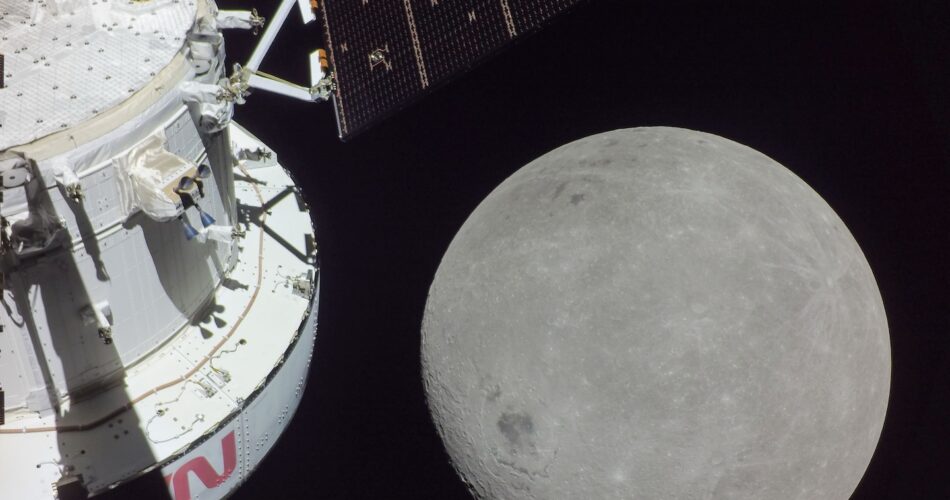Orion should surpass that at 7:42 a.m. Eastern time on Saturday. The spacecraft is expected to reach its maximum distance of more than 270,000 miles from Earth at 4:13 p.m. Eastern time on Monday, NASA said.
The distant orbit, which requires little fuel to maintain, will allow Orion to test its systems to see how the vehicle performs. The orbit is so vast, however, that the craft will complete only about half an orbit in six days before it begins its return flight to Earth.
The flight, without any astronauts on board, is the first step in NASA’s Artemis program, which seeks to return astronauts to the lunar surface for the first time since the Apollo missions of the late 1960s and early ’70s.
Using cameras mounted on the outside of the spacecraft, Orion has been beaming back dramatic images and live video from its journey. including spectacular images of Earth, seen hanging in the distance, more than 200,000 miles away, in the vast, inky darkness of space.
If the current mission, known as Artemis I, goes well, NASA plans a second flight, this time with astronauts on board, as soon as 2024. That mission, known as Artemis II, would also orbit the moon, with a landing with humans to come afterward.
“The mission continues to proceed as we had planned, and the ground systems, our operations teams and the Orion spacecraft continue to exceed expectations,” Mike Sarafin, NASA’s Artemis I mission manager, said this week. “And we continue to learn along the way about this new deep spacecraft.”
He said the Space Launch System rocket, even more powerful than the Apollo-era Saturn V, performed so well that the results were “eye-watering.” Its massive thrust, however, caused some damaged to its mobile launch tower, including blowing the doors off the tower’s elevator. But, on the whole, “the structure itself held up well,” Sarafin said.
After Orion completes half an orbit around the moon, it will slingshot itself around the moon toward home.
One of the main tests will come as the spacecraft re-renters Earth’s atmosphere, traveling at about 25,000 mph. The friction with the thickening air will produce temperatures as high as 5,000 degrees Fahrenheit.
The spacecraft is expected to splashdown in the Pacific Ocean off the coast of San Diego on Dec. 11.
While there are no real-life astronauts on board the Artemis I mission, there is a mannequin named Moonikin Campos that is riding in the commander’s seat of the Orion spacecraft. It’s outfitted with a suit and sensors to provide feedback on what the ride will be like for future astronauts.
The seat has two sensors to record acceleration and vibration. The spacesuit has sensors to record radiation levels.
The name “Moonikin” was chosen through a public contest. Campos was chosen in honor of Arturo Campos, a former NASA engineer who played a key role during the recovery of the Apollo 13 spacecraft after the mission went awry.
Two mannequin torsos are also riding along. Named Zohar and Helga, they are made from materials that NASA says “mimic human bones, soft tissues and organs of an adult female.” (Women are believed to be more sensitive to radiation exposure than men.)
They have sensors to measure radiation as well. Zohar has a radiation vest, but Helga doesn’t.
Source link



